The Sounds of Cork Jazz: "It’s the atmosphere, togetherness and the sense that the city itself is performing"
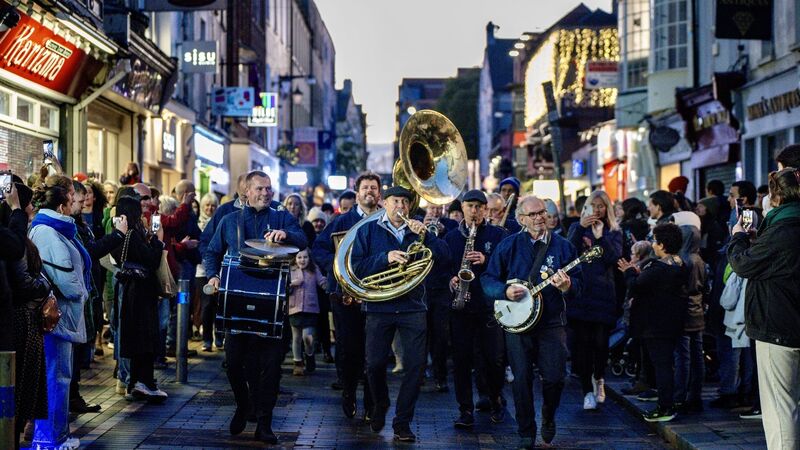
Oliver Plunkett Street came alive with a cacophony of brass and jazz as musicians paraded along the street, delighting onlookers with vibrant sounds and rhythm as part of The Big Fringe at the Guinness Cork Jazz Festival. Picture Chani Anderson.
For one weekend every autumn Cork city changes gear. Streets that the rest of the year carry shoppers, students and tourists suddenly hum with trumpet blasts, snatches of saxophone, and the low, constant murmur of people still talking about the last set they heard. The Guinness Cork Jazz Festival is not simply a string of concerts — it’s a city-wide takeover that turns pubs, theatres, hotel lobbies and open plazas into improvised stages, and fills Cork with the kind of warm, boisterous energy that keeps people coming back to the Leeside every October Bank Holiday for over 40 years now.
Imagine the city as a patchwork of listening rooms. On any given street you’ll hear three or four genres colliding: straight-ahead jazz, funk and soul, experimental electronics with jazz roots, brass bands on the move, and singer-songwriters reworking standards. There’s a convivial chaos to it — people spilling out of venues with steaming pints, buskers grabbing the spillover crowd, and small groups plotting which late-night gig to chase next. Locals and visitors trade tips in doorways; festivalgoers map their nights around a mixture of big-ticket shows and the serendipity of stumbling into a magical set at a back-street pub.
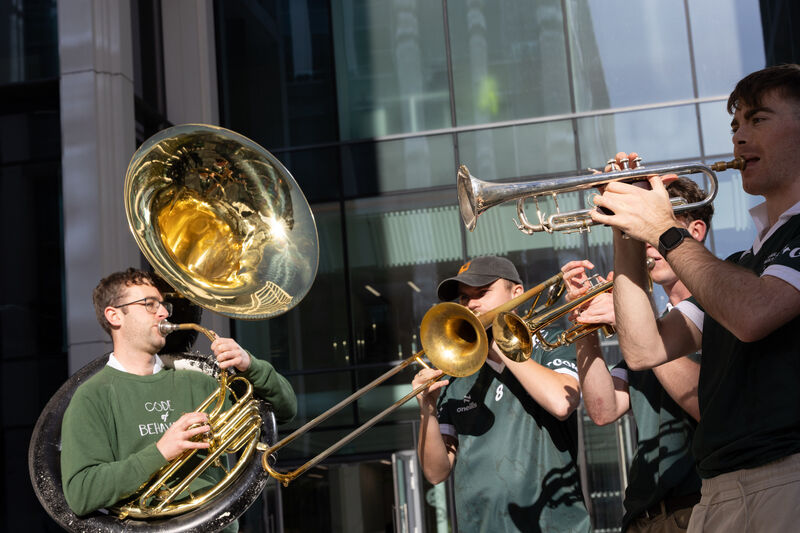
It’s Friday evening, and Cork is already humming. The first thing that hits me as I step onto Patrick Street is the sound — not just music, but a layered, living soundtrack. The Guinness Cork Jazz Festival has arrived, and with it, the whole city seems to sway to an invisible rhythm.
The weekend kicks off with the Oliver Plunkett Street Stroll on Friday evening and from where I stand, a full brass ensemble in matching hats parades past the English Market, their instruments gleaming under the streetlights that are just starting to twinkle to life. The crowd follows them, laughing, dancing, spilling out from the pavements into the road. Even the Gardaí watching from the corners can’t help but grin. The magic of Cork Jazz is that music fans can just stroll from Grand Parade down Oliver Plunkett Street, onto Maylor Street and onto Caroline Street whilst listening to national and international brass and marching bands all around them without spending a penny.
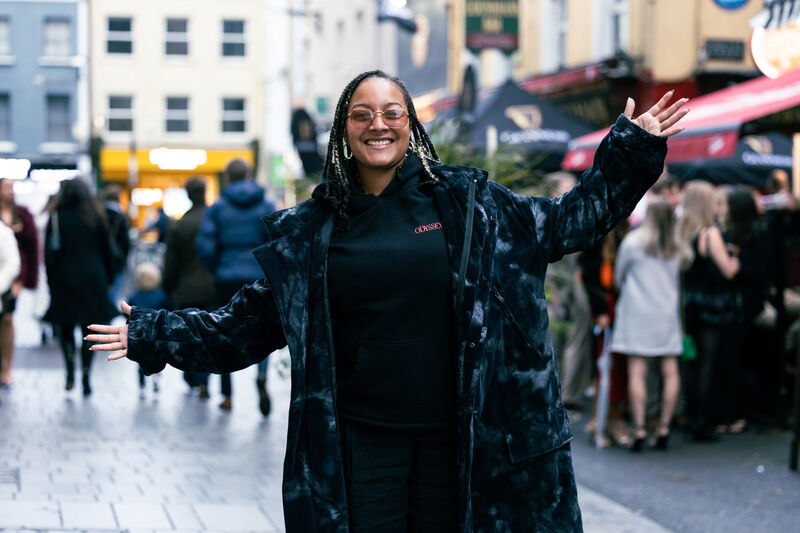
Would it really be a Guinness Cork Jazz Festival without a pint of the black stuff? I think not, so a trip into the Oliver Plunkett is next on the cards for me. Inside The Oliver Plunkett pub, it’s shoulder-to-shoulder. A jazz quartet squeezes onto the small stage at the back wall — double bass, piano, trumpet, and a drummer whose beat mimics the beating heart of the bustling city. The crowd sways gently, pints raised, the clink of glassware blending into the rhythm. Around us, punters pose for pictures with friends and drinks are ordered at the bar by lads in suits and shirts and women shining as they shimmy in adorned in sequins.
Another essential tradition for the Jazz, a visit to where it all began, the home of Cork Jazz itself, the Metropole. McCurtain Street was alive with revelry, swapping the family atmosphere of Oliver Plunkett Street to a more sophisticated clientele. After mentally taking note of the crowds of festival goers surrounding the Shelbourne and feel a sudden appreciation for ticketed events where you guaranteed entrance, I duck into the Metropole. The lobby is alive with chatter and the sound of music floats from every doorway.
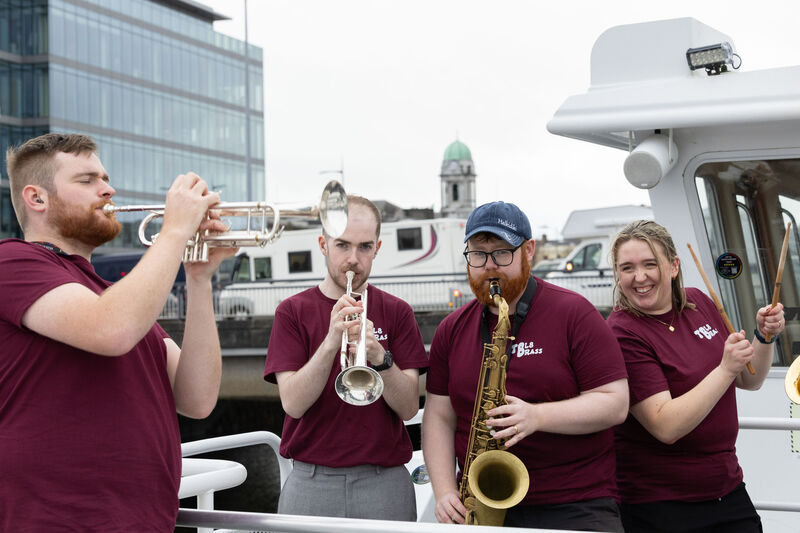
The Metropole’s Jazz Club has a reputation for legendary late-night sessions, and it is clear why. Inside, the room is dimly lit, all brass and velvet. A singer with a voice like smoke croons into the microphone, backed by a trio that plays who all have their eyes closed, as if they are alone with just them and the rhythm they create. The crowd is mixed: locals who’ve been coming for decades, tourists seeing it all for the first time, and musicians from other bands who’ve stopped by after their own gigs to join the jam.
When I step outside again, it’s past midnight, but the city isn’t sleeping. The streets are glowing — not just from lights, but from energy. You can feel it in the air, that pulse that connects everyone out tonight. Down by the river, the reflections of the bridges shimmer in time with a bassline coming from a nearby venue. I follow it to a small bar tucked beside the water, where a young band is tearing through a set that fuses jazz with funk and electronic beats. The crowd dances shoulder to shoulder, sweat and laughter mixing with the rhythm. It’s raw, alive, and perfectly Cork — traditional and rebellious all at once.
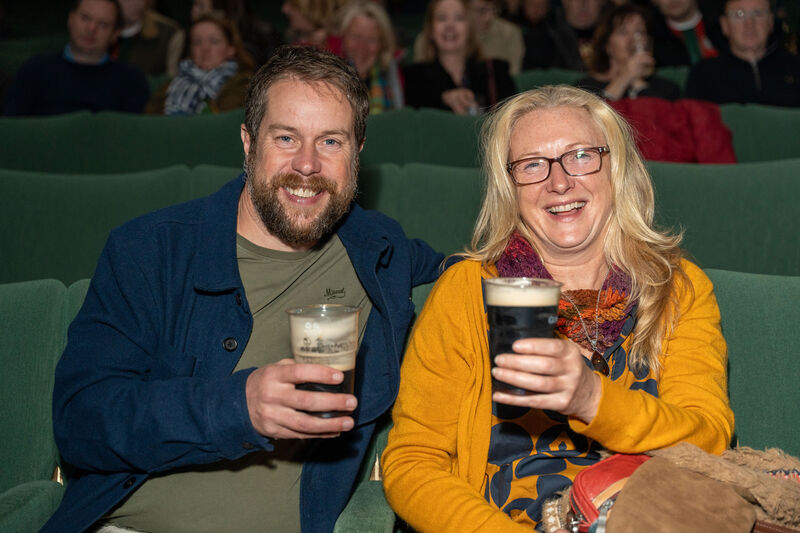
Saturday morning brings a slower tempo. The city is a little bleary-eyed, myself included, but not tired. Instead, it feels as though it is just warming up.
I stop at Emmett Place, where a stage has been set up and a host of families with small children, older couples and groups of young people who are already on their way to the nearest pub stop to take in the band that plays. The performers slowly but surely begin to pump that much needed energy back into the city and myself as children dance to a jazzed-up version of “When the Saints Go Marching In,” played by the group of brass musicians who look like they’re having as much fun as the kids.
Later that evening, my feet, which are clad in heels that I may regret later in the night, take me to Seventy Seven on Grand Parade. Here I am met with a see of promotional fedora hats what are passed out to punters and a lively ensemble playing a high energy cover of an ABBA song on varying instruments. There are smiles on faces, ridiculous free hats on heads and pints in hand and it is glorious to witness.
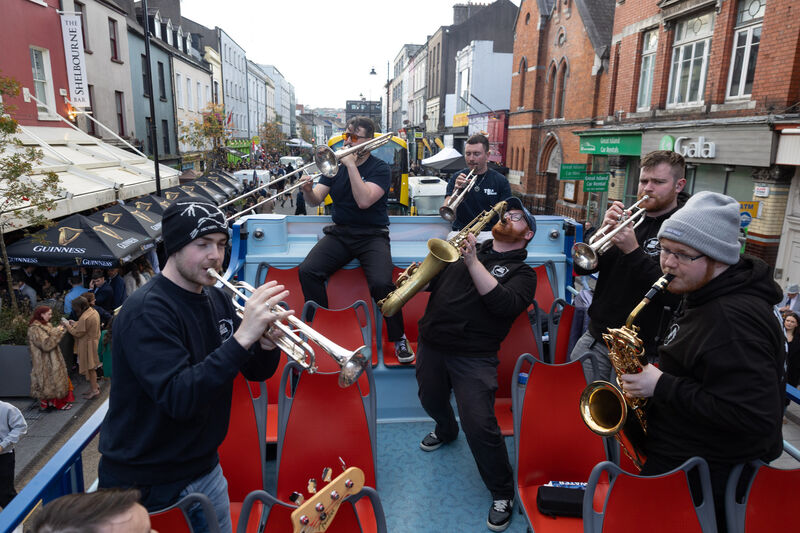
That’s the thing about the Cork Jazz Festival. It’s not just about the music — it’s about the atmosphere, the togetherness, the sense that the city itself is performing. Every cobblestone, every pub doorway, every rain-soaked street corner becomes part of the melody. Even when the last trumpet fades and the final crowd disperses, you leave with the rhythm still in your chest.
As I walk back toward my home in my heels, having failed miserably to hail a taxi, I can still hear it — faint but steady — a snare tapping somewhere in the distance, the low rumble of a bass, a voice calling out, “One more tune!” And I smile, because in Cork, there always is one more tune. The night never quite ends; it just carries on somewhere else, around the next corner, waiting for you to follow.
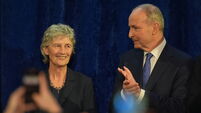
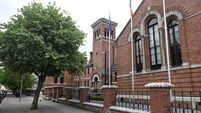
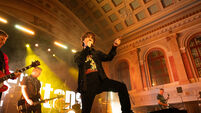
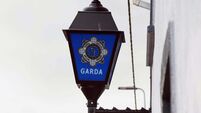
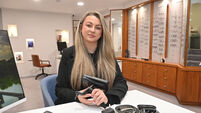
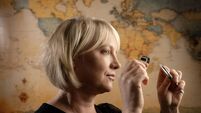

 App?
App?


